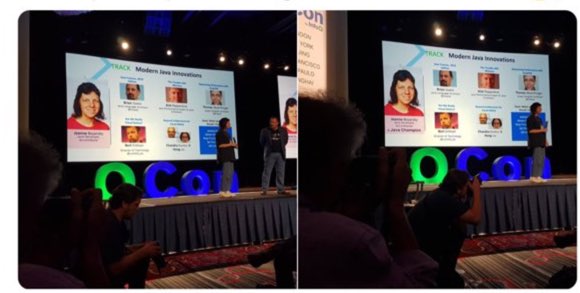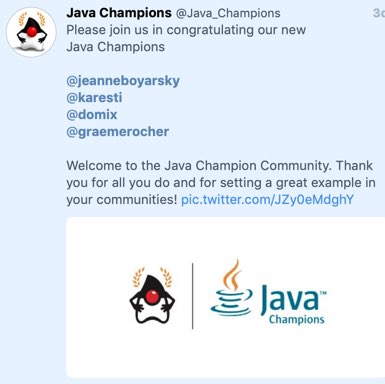On Tuesday 6/23//19, I became a Java Champion. If you aren’t familiar, there’s a good overview of the program. To me, it’s an amazing peer recognition award! As of right now, there are 287 Java Champions. (Andres Almiray maintains a list of Java Champions)
One of my friends took video of the announcement. It was fun. I was the track lead of the Modern Java Innovation track. When I got up to explain the track, Wes (the MC) said there was a mistake on the slide. He then explained the Java Champion program and announced me as one.

Shortly after that came the official tweet

You might be wondering what I did to become a Java Champion. Many things including speaking, writing, volunteering with a robotics team, community contributions like CodeRanch and more.
A year ago at conferences, I started getting asked if I was a Java Champion. I was not, but it motivated to organize my accomplishments. I stood up a Google site to list what I’m most proud of: http://jeanneboyarsky.com/. Time to add Java Champion to that list! (and yes, I know how to make a website; I choose google site so I could focus on content)
